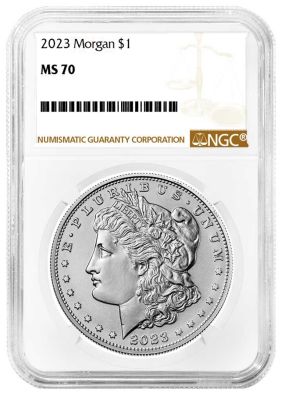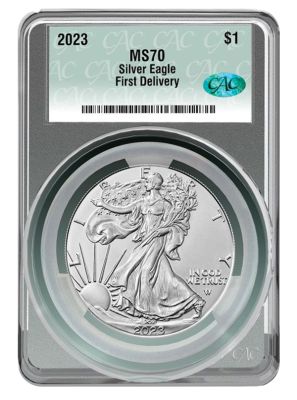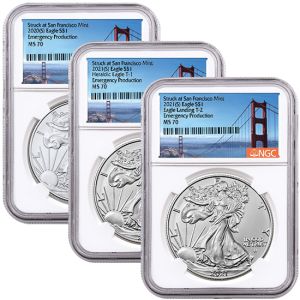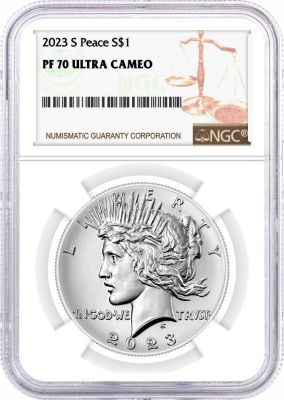Everything You Need To Know About The 1776 Continental Dollar

Everything You Need To Know About The 1776 Continental Dollar
The 1776 continental dollar coin is a continental currency that represents a rich history of a confederation that was in upheaval as it fought its way from the yokes of the British Empire. In 1776, delegates from thirteen American colonies, also called the continental congress, were eager to assert the sovereignty of the young American Nation. They set out to produce a coin to replace the commonly used British and Spanish Currency. The creation of a new coinage was a traditional symbol of national independence and would also serve to prop-up the value of the newly issued continental paper currency.
What Is Continental Currency?
The term continental currency was first coined in 1775. During this year, the Continental Congress realized that they needed enough funds to wage a prolonged struggle against the British Empire and the British crown. This advised the congress to start producing continental paper currency in dollars ranging from one-sixth of a dollar to $80.
Continental Currency, also known as Continentals, was the first paper currency that was issued and distributed by the Continental Congress in June 1775 to fund the American Revolutionary War. It was solely backed by the "anticipation" of tax revenues.
But since the Currency was easily counterfeited, majorly by the British, and was not backed by any physical asset such as silver or gold, it suffered gradual depreciation that eventually rendered it practically worthless by the end of the war. This bore the famous phrase "not worth a continental." The 1776 continental dollar coin was part of the 11 emissions that were produced between 1775 and 1779.
The 1776 Continental Dollar
While there is no known documentation authorizing the issuance and use of the 1776 continental currency dollar, it is still believed that this must have been the first coinage of the newly formed confederation. It is thought that the dollar coin was meant to replace the 1 dollar paper bill that was missing in emissions from 1776 to 1779. The coin was made to be the same size as the Spanish milled collar but with an extra edge in its design. According to congressional records, the coin's design is seen to have been inspired mainly by Benjamin Franklin's drawings.
This iconic coin started losing its value when the Continental Congress began to churn out paper currency to pay its bills. The coin's design was later resurrected in 1787 through the first documented Unites States copper coinage known as the Fugio Cent. Today, the 1776 continental coinage is a highly valued rarity as it celebrates the birth of a new nation â the United States and carries immense numismatic value due to its elaborate designs engraved on either side.

Varieties and Ornamental Designs of The 1776 continental dollar
The basic design of the 1776 continental dollar coin is the same and weighs around 15-19 grams (240-300 grains) with a diameter of 38 mm. The continental dollar is mostly famous because of its unique coinage varieties and dies combinations. The coin was struck in three different metals: Brass, Pewter, and Silver, with Pewter coins being the most commonly available varieties today. They also have some of the rarest die varieties.
The Obverse Die of the coin has three uniquely characteristic Rings:
- CONTINENTAL CURRENCY 1776 is engraved along the outer border ring clockwise from 7 o'clock,
- The inside ring has the word FUGIO (meaning I fly) and a Sun rays beating down onto a sundial.
- The inside legend has a central motif of a sundial (used to tell time based on the sun's position) and MIND YOUR BUSINESS engraved below.
The Reverse die also has unique characteristics:
- The reverse die has 13 interlocking rings, which have the names of the 13 American colonies engraved on them.
- AMERICAN CONGRESS is inscribed between two rings
- We ARE ONE is engraved on the inside ring of the coin
Today, there are four different known obverse die combinations for this coin.
- Obverse 1: CURENCY is misspelled
- Obverse 2: CURRENCY is spelled correctly
- Obverse 3: CURRENCY with an added EG FECIT (presumed to mean Elisha Gallaudet Made This) between the central rings
- Obverse 4: CURRENCEY is misspelled.

All the four combinations were struck using the same reverse die that was modified twice during its usage. These reverse modifications involve re-engraving after they were first produced and are rightfully collected today as separate varieties. The different obverse and reverse die varieties really enhance the significance and enjoyment of these coins series. This explains why each coin variety sells at different price points today.
How Much Is a 1776 Coin Worth
We receive numerous emails of people wanting to know how much a 1776 coin is worth and what really affects the value of such numismatic and historical coins. The truth is, there is no silver bullet answer to this question.
Many people expect to hear of a formula with several variables (and perhaps some constants) that one can use to get an answer. But, it doesn't work that way. The price and worth of a coin depends on various market tendencies. There are no absolutes, really.
For instance, while the continental dollar coin was approximately worth a dollar in 1776, its value has gone up tremendously over the years. Just recently, in July 2018, a coin collector from France bought the 1776 continental coin at 56 Euro cents only. The seller is said to have preserved the coin in a cookie box, together with other coins and medals. According to Professional Coin Grading Services (PCGS), both the buyer and the seller had no idea what they were trading.
The buyer only came to realize the value of the coin after he googled the name "Continental Currency 1776". He later sent it to PCGS to be authenticated and graded. The grading service placed the value of the coin $97,500, describing it as a true treasure.
While coins are minted with a specific face value, their value can exceed manifold once they become collectibles. Some rare varieties of the continental coins have previously sold for up to half a million dollars. It is, therefore, no secret that rare coins are big business with an estimated market worth about $5 Billion.
Interestingly, the value of historical and numismatic coins continue to rise steadily with time. This explains why a coin that had minimal value during its minting can fetch a hundred times more today. When looking for coins to invest in, it is very important to understand the factors that influence the price of various coins.
Factors such as age, mint condition, how many were minted, and any errors produced are dependent on the actual coin. Other factors, such as demand, are market-imposed. Here's a look of several things that may affect the buying or selling price of a coin:
- Coin Grade
This is one of the top-most factors that affect the value of a coin. The grading criteria are based on the luster, attractiveness, color, strike, and preservation of the coin. The grading is mostly done by 3rd party grading agencies that determine the unbiased coin's grade. Ideally, coins in top grades tend to be higher priced than similar coins in lower grades.
- Coin Rarity
The availability or lack of it can affect the value of a coin. If coins are few and rarely available, then their price may be higher than others. For instance, some variety sets of the 1776 continental dollar tend to be more expensive than others due to their rarity. Rarity can be influenced by erroneous issues during the mint process. Colonial coins with weakly struck design or planchet flaws can tend to be rare and more valuable. Similarly, lint marks, file marks, and strikes left by foreign materials on the planchet can also make a coin unique and ultimately affect their value.
- Coins Demand
If a coin is rare, its demand is likely to be extremely high. The demand can also be driven by market psychology, which arises when there is a surge in the popularity of a particular coin among the general public and the numismatic community.
- Face Condition Of The Coin
The condition of the coin is mostly affected by various factors such as wear and tear, storage conditions, corrosion, and other issues due to human handling. A coin with a perfect mint grade is more valuable than an identical one with blemishes.
- The Intrinsic Value of The Metal
Coins with a higher value of precious metals tend to be more expensive than others since the metal can be melted and resold for other purposes such as industrial use.
- Unique History
A coin can become a high-value collectible if it has a unique historical significance, such as being traced back to some great event in history or a renowned ruler. The 1776 continental dollar coin is especially valuable since it historically marks the first coinage that was used during the birth of the American Confederation.
- Is the Coin A Commemorative, Special Issue, or General Issue?
If the coin was minted out of necessity, it is likely to have some value. Limited editions such as commemoratives and special issues are also highly valuable since many of them do not make it to circulation.
How to Tell If a 1776 Continental Currency Coin Is Real or Fake

The 1776 continental dollar coins are highly valuable and can fetch a tidy sum of money if they are in good mint condition and grade. They are a major display of American might and sovereignty. Due to their value, the 1776 continental dollar coins are perhaps some of the counterfeited coins. The market is also awash with reproductions that were struck for sale as souvenirs.
With so many replicas and fakes in circulation today, you may find it difficult to tell if a 1776 Continental currency is real or fake. Fortunately, there are several telltale signs and tests that you can use to identify a real and a counterfeit coin, including:
Genuine coins are made of brass, pewter, and silver, with pewter coins being the most prevalent. You can identify the material of the coin by its color and luster. If the coin is not made of these metals, it is highly likely that you have a fake.
- Fakes also have an enhanced graininess on the surface and mushy details that is nowhere close to the workmanship and features in a real 1776 continental dollar.
- Most Replicas have the word "COPY" or "REPLICA" engraved on the reverse die of the coin. Mostly, these were struck to be used as souvenirs and were hugely popular in the mid-70s during the commemoration of America's Bicentennial.
- Since most of the original 1776 Continental dollar coins were made of light metals such as pewter, they tend to weigh between 15 and 19 grams. If a coin weighs outside this range, then that is definitely a fake or a replica.
- You can also tell a fake by looking at the depth and sharpness of the strike using a magnifying glass or pair of loupes.
- Most continental dollar coins have a patina (a thin layer of corrosion) due to extended exposure to air and water. If your coin has a like-new appearance, then you might be having a fake.
These tests, however, are not always a surefire way to tell if the coin is real or a reproduction. If you have a 1776 dollar coin and are not sure if it's real or fake, contact us today to have it assessed by one of our numismatic professionals.
Need Help Buying Or Selling A 1776 Continental Dollar?
The 1776 Continental Dollar is a highly valued mint coin that makes a good investment for people looking to store away their wealth for their future generations. Due to the inherent historical significance, numismatic value, and rarity, the value of the continental dollar coin has been increasing steadily. Contact us today for guidance and assistance on how you can invest in this rare coin. We are a team of trusted and highly experienced investments professional dealing with precious metals and numismatic coins.


































